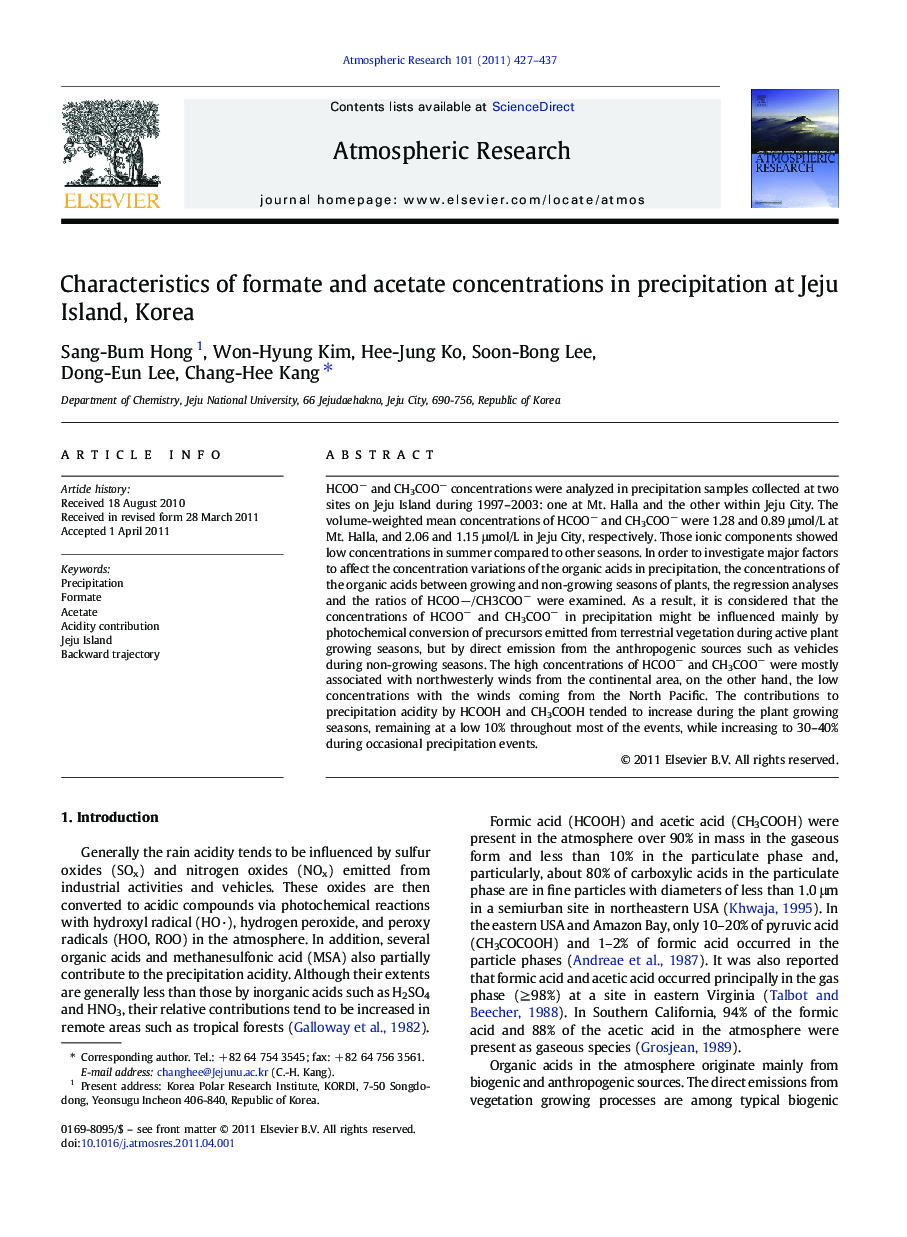| Article ID | Journal | Published Year | Pages | File Type |
|---|---|---|---|---|
| 4450456 | Atmospheric Research | 2011 | 11 Pages |
HCOO− and CH3COO− concentrations were analyzed in precipitation samples collected at two sites on Jeju Island during 1997–2003: one at Mt. Halla and the other within Jeju City. The volume-weighted mean concentrations of HCOO− and CH3COO− were 1.28 and 0.89 μmol/L at Mt. Halla, and 2.06 and 1.15 μmol/L in Jeju City, respectively. Those ionic components showed low concentrations in summer compared to other seasons. In order to investigate major factors to affect the concentration variations of the organic acids in precipitation, the concentrations of the organic acids between growing and non-growing seasons of plants, the regression analyses and the ratios of HCOO−/CH3COO− were examined. As a result, it is considered that the concentrations of HCOO− and CH3COO− in precipitation might be influenced mainly by photochemical conversion of precursors emitted from terrestrial vegetation during active plant growing seasons, but by direct emission from the anthropogenic sources such as vehicles during non-growing seasons. The high concentrations of HCOO− and CH3COO− were mostly associated with northwesterly winds from the continental area, on the other hand, the low concentrations with the winds coming from the North Pacific. The contributions to precipitation acidity by HCOOH and CH3COOH tended to increase during the plant growing seasons, remaining at a low 10% throughout most of the events, while increasing to 30–40% during occasional precipitation events.
Research highlights► HCOO− concentrations in precipitation were 1.28-2.06 μmol/L at Jeju Island of Korea. ► CH3COO− concentrations in precipitation were 0.89-1.15 μmol/L at Jeju Island. ► The high [HCOO−] and [CH3COO−] were mostly affected by northwesterly winds. ► The acidity by HCOOH and CH3COOH increases during the plant growing seasons.
